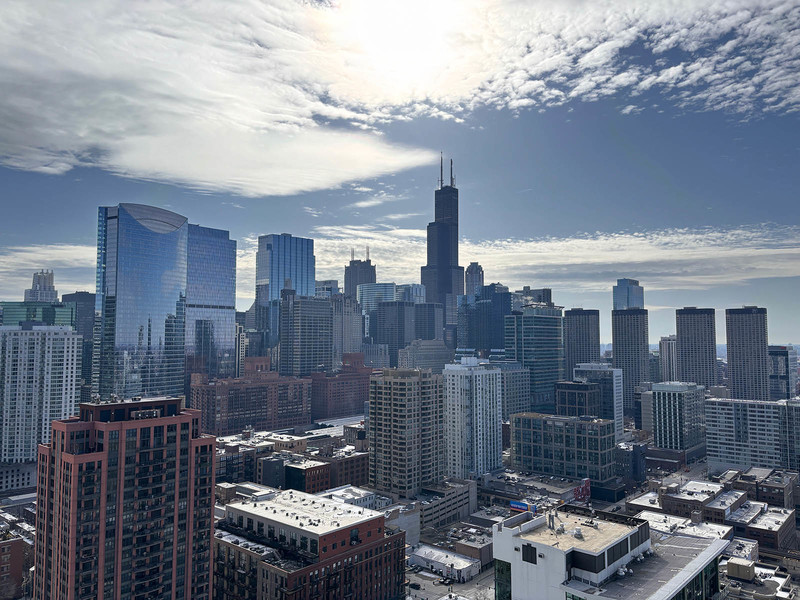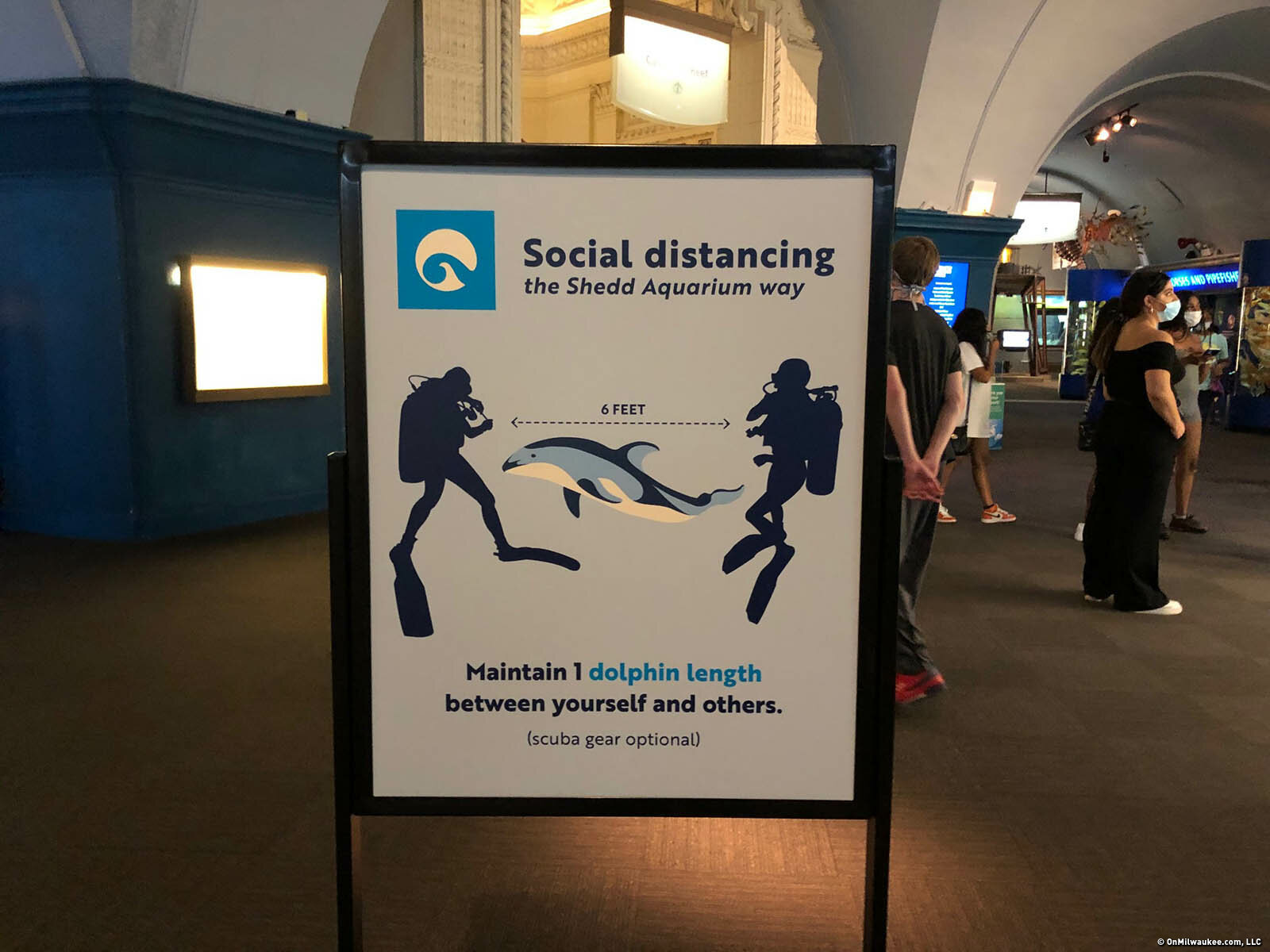CHICAGO – As the solstice sun sets, I hie through the streets of Chicago’s Loop – which bustles with pre-Christmas revelers and Friday late afternoon traffic – headed toward one of the city of architecture’s real treasures.
When I arrive, a golden glow escapes through the windowed doors at The Rookery, 209 S. LaSalle St., the stunning lobby of which is brimming with holiday cheer.
Designed by Burnham and Root, and with a major lobby renovation by Frank Lloyd Wright, The Rookery, with its iron tracery supporting a distinctive skylight, regal marble flight of stairs, elaborate decoration and one of the most absolutely stunning iron staircases I’ve ever seen, is a revelation to experience in person. (Yes, you can tour it!)
Getting myself over there to stand amid its glory while the rest of the family recharged with a rest at the hotel felt like a little Christmas gift to myself.
There’s just something about a big city during the holidays: the twinkling lights, the elaborate window displays, the bustling crowds, the festive decorations, the groups of carolers. I grew up drinking it in at New York's Rockefeller Center; my kids are growing up feasting on it in Chicago.
So our trip – as annual as possible – is for that purpose: savoring the Christmas vibe like eggnog.
But, as you might have guessed already, for me, every visit to the Windy City is another chance to dig into the city’s world class architecture, and on our recent trip, it was the brandy in that eggnog.
I started this round of exploration by checking us into the brand new Hotel Julian, a 218-room boutique hotel across the street from Millennium Park at 168 N. Michigan Ave.
The Julian occupies the 1916 former Atlantic Bank Building, designed by Benjamin Marshall, of Marshall & Fox, a firm responsible for drawing other legendary Chicago hotels, like the Blackstone, The Drake and the The Edgewater Beach.
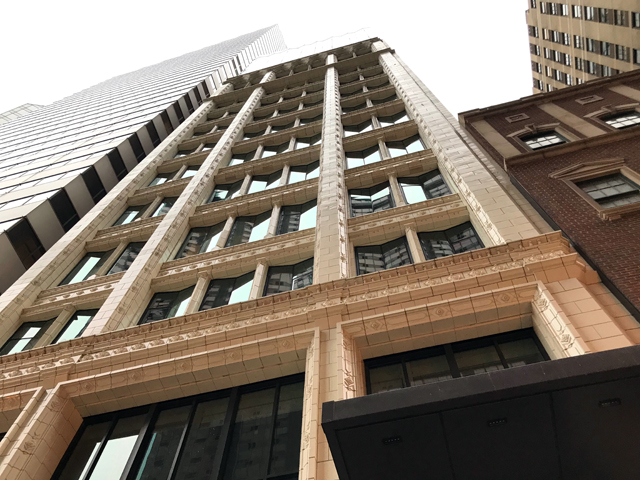
After a $75 million makeover, the 12-story building – which sat vacant for years, an eyesore on the city’s most visited strip – now has 17 floors and an already well-reviewed steak restaurant, About Last Knife, in the lobby (try the beef wellington!). The rooms are modern and luxurious – with views over Millennium Park's "bean" (Sir Anish Kapoor's "Cloud Gate") and the city skyline – the staff infectiously friendly.
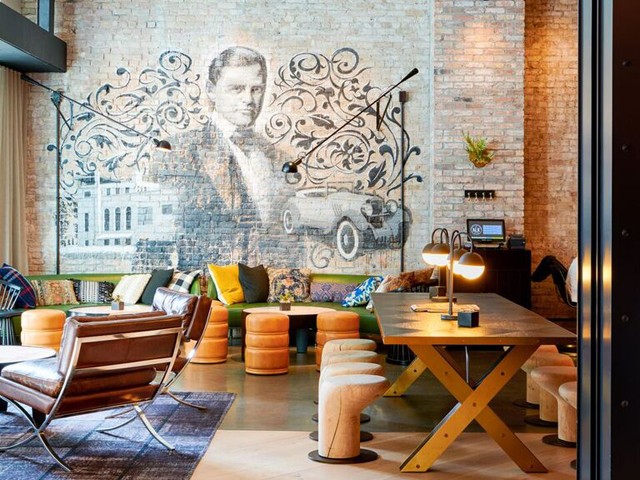
Two views of the Hotel Julian lobby. (PHOTOS: Daniel Kelleghan)

But what struck me most, and made me smile every time I returned to the hotel – named, incidentally, in honor of St. Julian the Hospitaler, patron saint of innkeepers and travelers – was the lovingly restored terra cotta facade (dramatically lit at night) and the windows. Each opening has two vertical panes that are recessed to meet in the middle, creating and concave V that generates interesting reflections.

Tearing myself away from gawking at that, I entered the Chicago Pedway (pictured above) – an underground maze of subterranean passages with shops, bars, restaurants and access to train stations, department stores, health clubs, malls, subways and other places – which brought me right to the door of the new home of the Chicago Architecture Center.
Having made its home for a quarter-century in the lovely old Railway Exchange Building on Michigan Avenue, the Chicago Architecture Foundation moved last summer to the sleek Mies van der Rohe-designed One Illinois Center, 111 E. Wacker Dr., and renamed itself the Chicago Architecture Center.

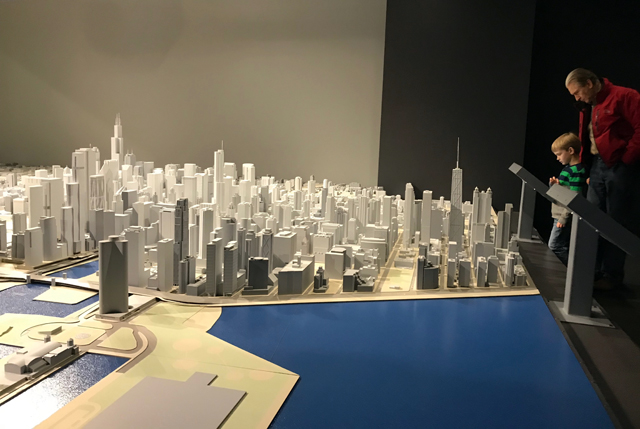
Here there’s more space, and a more prominent street-facing profile for the center, which houses a gift shop and two large gallery spaces – don’t miss the one upstairs with the giant models of skyscrapers from around the globe – and the headquarters and ticket office for the center’s many architecture tours.
It is also where I spied the photo of The Rookery lobby skylight that sent me scurrying across town, via both the underground Pedway and the damp, chilly sidewalks, to see it for myself.
Later, we headed north to 360 Chicago, the observation deck of the Hancock Building, 875 N. Michigan Ave., for a completely different perspective on Chicago architecture.
Though we've ridden the fast-moving elevators numerous times – for a sky-high brunch, for general gawking, to check out the opening of a now-gone Lavazza cafe – this visit promised to allow us to really lean into Chicago's skyline.
Or should I say, lean out over it?
At TILT, you stand in a glass box, hold the handrails and soon your entire body is literally leaning face-first toward the ground, 94 floors below.
It sounds terrifying and yet it was so fun I – terrified of things like rollercoasters – did it twice. It was a great way to get a new and dramatic view of familiar terrain.


The next night we returned to the absolutely stunning, and huge, Palmer House Hotel (the lobby ceiling of which is pictured directly above) – where the brownie was invented, history buffs! – this time not only to bask in the over-the-top lobby decor and almost literal explosion of holiday bustle, but to witness The Magic Parlour, an almost vintage-style magic show that is nearing its 1,000th performance.
Purchase your tickets in advance and gather at the meeting place in the hotel lobby, where third-generation magician Dennis Watkins leads you to the intimate room in which the show takes place with a small audience, almost every member of which will be drawn into the performance.

(PHOTO: Rich Hein)
It feels like the kind of experience that doesn’t exist anymore but, poof, there it is as Watkins performs inexplicable feats of ESP, illusion and sleight of hand that will leave you amazed and stupified.
Watkins also manages to make time fly and soon we’re back in the Palmer House lobby, where we pass Louis Comfort Tiffany’s famous brass peacock doors to find ourselves back out on State Street, where darkness has fallen, the lights are again aglow, the Macy’s holiday windows have drawn new crowds and the only thing missing is a dusting of magical snow.
Born in Brooklyn, N.Y., where he lived until he was 17, Bobby received his BA-Mass Communications from UWM in 1989 and has lived in Walker's Point, Bay View, Enderis Park, South Milwaukee and on the East Side.
He has published three non-fiction books in Italy – including one about an event in Milwaukee history, which was published in the U.S. in autumn 2010. Four more books, all about Milwaukee, have been published by The History Press.
With his most recent band, The Yell Leaders, Bobby released four LPs and had a songs featured in episodes of TV's "Party of Five" and "Dawson's Creek," and films in Japan, South America and the U.S. The Yell Leaders were named the best unsigned band in their region by VH-1 as part of its Rock Across America 1998 Tour. Most recently, the band contributed tracks to a UK vinyl/CD tribute to the Redskins and collaborated on a track with Italian novelist Enrico Remmert.
He's produced three installments of the "OMCD" series of local music compilations for OnMilwaukee.com and in 2007 produced a CD of Italian music and poetry.
In 2005, he was awarded the City of Asti's (Italy) Journalism Prize for his work focusing on that area. He has also won awards from the Milwaukee Press Club.
He has be heard on 88Nine Radio Milwaukee talking about his "Urban Spelunking" series of stories, in that station's most popular podcast.




